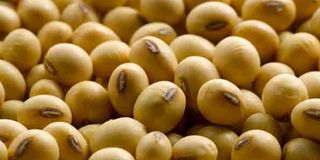Moshi farmers now sensitised to grow legumes

What you need to know:
- Moshi Rural District agricultural officer Peter Mcharo told The Citizen that during the 2016/17 financial year, African Ferterliser and Agribusiness Partnership (Afap), introduced soya protein beans to the district.
Moshi. The government sensitises farmers in Moshi District to grow legumes, especially soya beans, which are not only in high demand, but also have 40 per cent protein, which is good for nutrition.
Moshi Rural District agricultural officer Peter Mcharo told The Citizen that during the 2016/17 financial year, African Ferterliser and Agribusiness Partnership (Afap), introduced soya protein beans to the district.
He said soya beans had 40 per cent protein, which was good for nutrition, especially as the district was among the areas in the country with high prevalence of malnutrition and stunt.
He noted that they had a demonstration plot for training farmers on best farming methods at Uparo Village.
“While demand for soya protein is high, our farmers were not growing the crop because they were not aware of its high nutritional potential,” he noted.
For her part, Moshi Rural District crop specialist Joyce Kessy called on Afab to replicate the project to 156 other villages in the district to encourage other farmers to plant the crop.
She said despite its market potential, farmers in the district were yet to utilise it and that 1kg of soya was sold at between Sh2,500 and Sh3,000.
Meanwhile, the Afab senior director of Public Private Partnerships and Investments, Dr Mbette Msolla, said they implemented a two-year programme involving smallholder farmers and encouraged them to increase production and create food security.
He said the aim was to scale up improved technologies and they worked in eight regions, including Ruvuma, Njombe, Mbeya, Iringa, Morogoro, Kilimanjaro, Arusha and Manyara.
“The country demand is 20,000 tonnes annually, but production is at between 3,000 tonnes and 4,000 tonnes,” he explained.
He noted that two companies in Iringa, including Silver Land and Orange Tan Feeds, imported chicken feeds from Malawi and Uganda. Expounding on this he said soya beans were grown in Namtumbo, Njombe, Iringa, Mbeya and Morogoro.
Due to climate change effects, the government and environmentalists have been advising farmers to ensure they diversify and grow drought resistant crops. All this is meant to help them produce enough food and cash crops .



